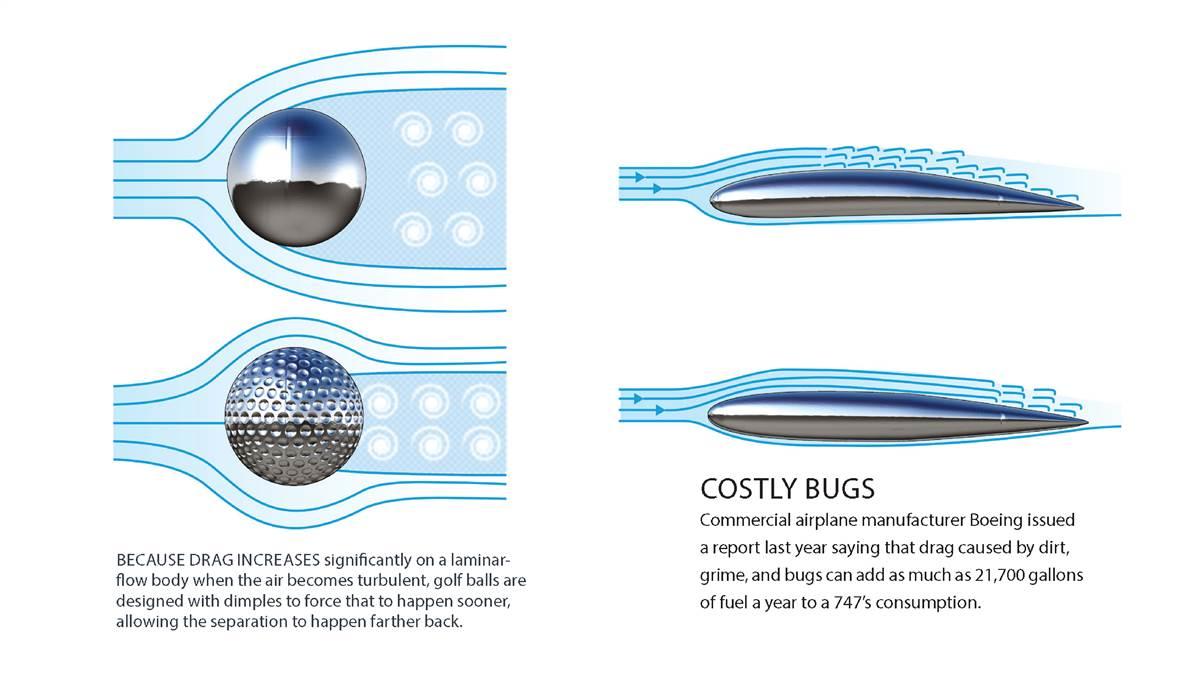
Because drag increases significantly on a laminar-flow body when the air becomes turbulent, golf balls are designed with dimples to force that to happen sooner, allowing the separation to happen farther back.
Airplane designers have been trying to play with the laws of physics for more than a century in an effort to increase speed and range, and reduce drag. Laminar flow is one of the tricks they are still trying to perfect.
Like rocks under a flowing stream, anything that sticks up or out of an airplane causes a disruption of the airflow. That increases drag, which in turn increases fuel burn and decreases speed. In the late 1930s engineers discovered laminar flow, an organized stacking of air in the boundary layer—the air moving right next to a wing’s surface—that results in significantly less drag. In terms of a wing, it means that the fraction of an inch directly above the surface has smooth air flow, rather than small eddies or a random pattern.
For laminar flow to work, two things must happen. First, the wing has to be smooth. Any rivet, gap, antenna, or other minor protrusion will make the airflow turbulent. Second, the wing has a slightly different shape. The camber, or curvature, occurs farther aft, and the leading edge is slightly narrower. At low angles of attack, that keeps the airflow orderly as it shoots across the material.
The widely recognized North American P-51 Mustang of World War II was the first airplane to incorporate this new design, but in practical terms it didn’t work well. Poor paint, dirt, and the toil of war negated any positive impacts designers were able to create.
Today a few small airplanes incorporate laminar flow, such as Mooney M20 series and Cirrus SR22.



